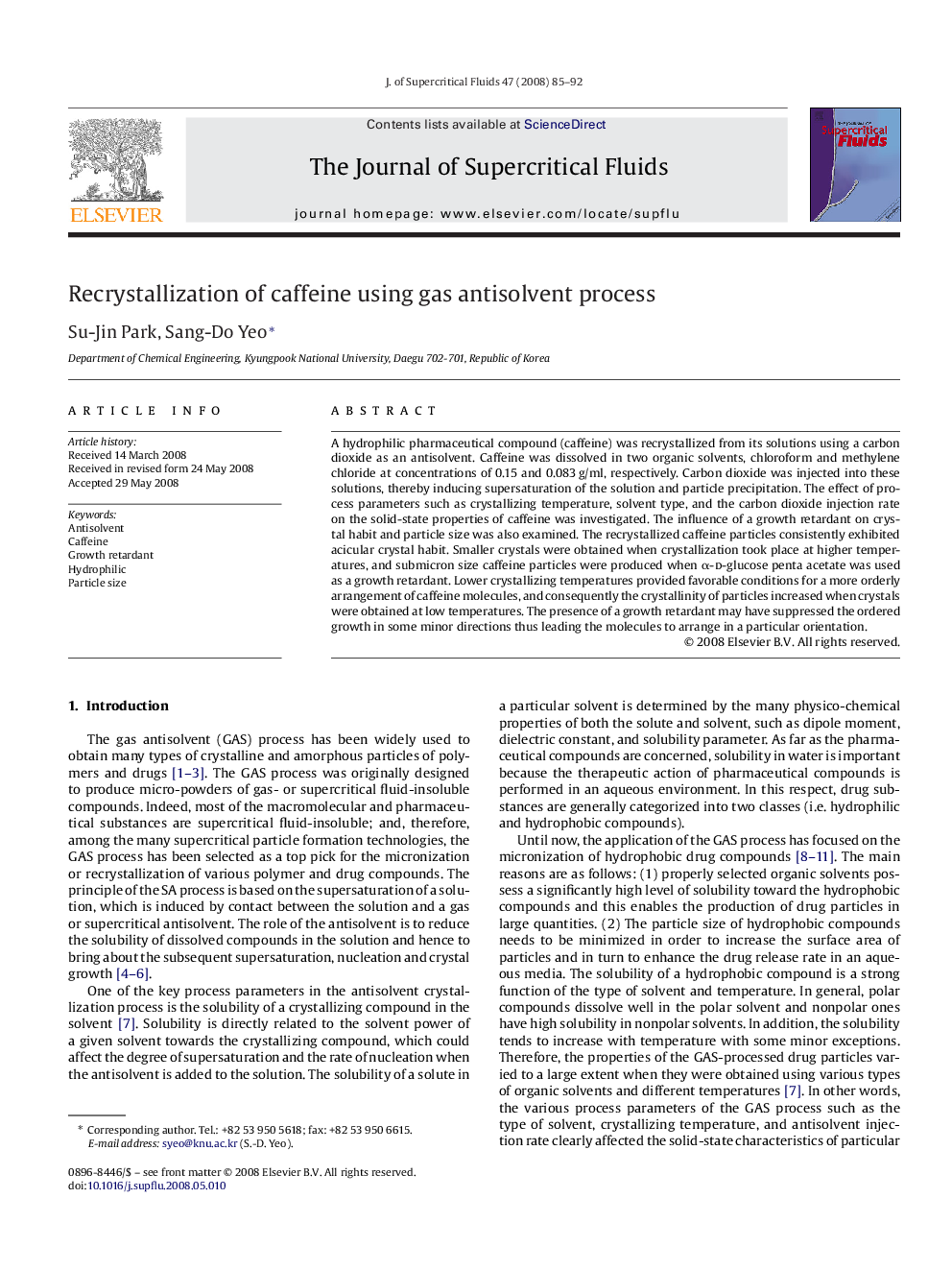| Article ID | Journal | Published Year | Pages | File Type |
|---|---|---|---|---|
| 231862 | The Journal of Supercritical Fluids | 2008 | 8 Pages |
A hydrophilic pharmaceutical compound (caffeine) was recrystallized from its solutions using a carbon dioxide as an antisolvent. Caffeine was dissolved in two organic solvents, chloroform and methylene chloride at concentrations of 0.15 and 0.083 g/ml, respectively. Carbon dioxide was injected into these solutions, thereby inducing supersaturation of the solution and particle precipitation. The effect of process parameters such as crystallizing temperature, solvent type, and the carbon dioxide injection rate on the solid-state properties of caffeine was investigated. The influence of a growth retardant on crystal habit and particle size was also examined. The recrystallized caffeine particles consistently exhibited acicular crystal habit. Smaller crystals were obtained when crystallization took place at higher temperatures, and submicron size caffeine particles were produced when α-d-glucose penta acetate was used as a growth retardant. Lower crystallizing temperatures provided favorable conditions for a more orderly arrangement of caffeine molecules, and consequently the crystallinity of particles increased when crystals were obtained at low temperatures. The presence of a growth retardant may have suppressed the ordered growth in some minor directions thus leading the molecules to arrange in a particular orientation.
Graphical abstractA hydrophilic pharmaceutical compound (caffeine) was recrystallized from its solutions using carbon dioxide as an antisolvent. The effect of operating variables such as crystallizing temperature, solvent type, and the carbon dioxide injection rate on the solid-state properties of caffeine was investigated. The influence of a growth retardant on crystal habit and particle size was also examined. The modification of crystal properties such as crystal habit, particle size, thermal behavior and the degree of crystallinity was observed.Figure optionsDownload full-size imageDownload as PowerPoint slide
